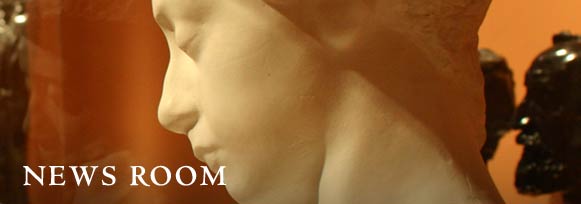Central Nigeria Unmasked: Arts of the Benue River Valley
Art from Little-Known Region of Africa on View at Stanford
May 16–October 14, 2012
Stanford, Calif. — “Central Nigeria Unmasked: Arts of the Benue River Valley” opens May 16 at the Cantor Arts Center, Stanford University. Presenting more than 150 objects drawn from international collections, the exhibition gives a comprehensive view of the arts from along the river that flows across the center of Nigeria, joining the great Niger River on its way to the Atlantic Ocean. “Central Nigeria Unmasked,” on view through October 14, 2012, reveals arts and cultures of diverse peoples who are far less known and studied than those of the majority populations in the country’s northern and southern regions.
Organized in sections that unfold as a journey up the 650-mile-long Benue River, the exhibition presents artistic forms and styles associated with more than 25 ethnic groups. The objects on view embody meanings and purposes crucial to Benue Valley peoples as they confront and resolve life challenges and rites of passage such as birth, initiation, marriage, illness and death. Works include maternal figures, sleek statues, anthropomorphized vessels, elaborate regalia, masks with naturalistic human faces, and masks that appear as stylized animal-human fusions. Film footage of dynamic, complex masquerades; maps; photomurals; and written material provide further context for understanding the artworks.
“Central Nigeria Unmasked: Arts of the Benue River Valley” is organized by the Fowler Museum at UCLA in association with the Musée du quai Branly, Paris. The exhibition is co-curated by Marla C. Berns (Shirley and Ralph Shapiro Director, Fowler Museum), Richard Fardon (Professor of West African Anthropology, School of Oriental and African Studies, University of London), Sidney Kasfir (Professor of Art History, Emory University, Atlanta) and Hélène Joubert (Curator of African Collections, Musée du quai Branly) with Gassia Armenian (Curatorial and Research Associate, Fowler Museum). Major support for the exhibition is provided by the National Endowment for the Arts, the Shirley and Ralph Shapiro Director’s Discretionary Fund, Jay and Deborah Last, Ceil and Michael Pulitzer, Joseph and Barbara Goldenberg, Robert T. Wall Family and Jill and Barry Kitnick. Major funding for the publication is provided by the Ahmanson Foundation with additional support from the Ethnic Arts Council of Los Angeles. The planning phase of the project was funded by a grant from the National Endowment for the Humanities.
Central Nigeria Unmasked: Arts of the Benue River Valley is organized by the Fowler Museum at UCLA in association with the Musée du quai Branly, Paris.The exhibition's presentation is made possible at Stanford by the Center's Clumeck Fund and Cantor Arts Center Members.
Berns speaks about the exhibition on Wednesday, May 16 at 6 pm. On Thursday, May 17, New York Times art critic Holland Cotter presents the Wilsey Distinguished Lecture, entitled “Critical Consciousness: Art and the World,” at 6 pm in Annenberg Auditorium, Cummings Art Building. A Nollywood Film Festival is being presented Saturday, June 9, from 11 am to mid-afternoon. Docents offer tours of the exhibition on Thursdays at 12:15 pm and Saturdays and Sundays at 2 pm. The programs are free, and all except the May 17 lecture are at the Cantor Arts Center.
# # #
VISITOR INFORMATION: Cantor Arts Center is open Wednesday – Sunday, 11 am - 5 pm, Thursday until 8 pm. Admission is free. The Center is located on the Stanford campus, off Palm Drive at Museum Way. Parking is free after 4 pm weekdays and all day on weekends. Information: 650-723-4177, museum.stanford.edu.
PUBLICITY PHOTOS: For high-resolution images, contact PR Assistant Manager, Margaret Whitehorn: 650-724-3600, mmwhite@stanford.edu
View fact sheet and curriculum resource for this exhibition

Artist unknown, Jukun, Wurbon Daudu village, Standing Female Figure, late 19th-early 20th century. Wood. The Menil Collection, Houston. Photograph by Hickey-Robertson, Houston.

Ochai, Idoma peoples, Crest Mask (Oglinye), early to mid-20th century. Wood, pigment, vegetable fiber, bead. Private collection, Paris. Photograph© Hughes Dubois, 2010



